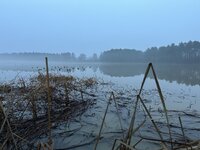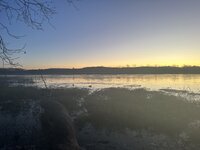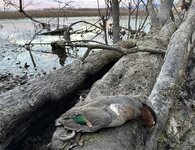Thanks all. I guess this has morphed into actual hunting tips. All good, I can use them.
i’ll mostly be hunting what is locally called a slang, which is a very slow moving or no-current dead-end creek off of a main creek, that flows into an extremely large lake that forms sort of a mini-flyway in the region. The creeks are usually about 40-100 yards wide, have an open channel in the middle, and emergent vegetation (cattails, bullrushes, pads, etc) for 15-20 yards on both sides, with hardwoods on shore. Sometimes it gets much wider though, with 200 yards of head-high or higher cattails on either side of the main creek. Ive already figured out the birds fly the open-water channels usually, and not nearly as much over the cattails and shorelines, and the points put you much more in the path of travel. In order to hunt those points theres times id be in waders or on shore in brush/blowdowns, but also times id back into the weeds in my kayak. Once the creeks freeze I can hunt the lake itself, which is a different ballgame entirely as its very big water.
As far as concealment, what did you have in mind? Ie what makes a good hide vs a sucky one?
As far as “learning to scout”, what is the method? Ive basically gone out in the pm to see where ducks are feeding, and tried to be there in the AM, assuming similar wind and conditions. And if Im somewhere in the AM and see them piling into a location, obviously I note that and try to find a pattern I can exploit next time. But I really dont have much nuance to that. What do I need to know?
With regard to the wooded edges, there are times when the shoreline timber floods in a few places, and you can frequently walk up some wood ducks and singles along the edges especially in a few little isolated holes where there is permanent water along the edge of the hardwoods, very few people hunt these but theyre skittish and its hard to be successful. Is there a good/better way to hunt these areas? The holes seem a bit isolated and not on any of the normal flight paths Ive observed, so not sure if there is a way to hunt them more effectively than just walking the edges of the marsh and trying to be sneaky.
Regarding meth, I’ve sworn off it, my parole officer said he’d prefer I obsess about something else.

Keep it coming, this is great, I appreciate it.




